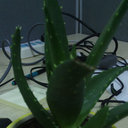Spatial distribution and molecular speciation of copper in indigenous plants from contaminated mine sites: Implication for phytostabilization.
キーワード
概要
Contaminated mining sites require ecological restoration work, of which phytoremediation using appropriate plant species is an attractive option. Our present study is focused on one typical contaminated mine site with indigenous plant cover. The X-ray absorption near edge structure (XANES) analysis indicated that Cu (the major contaminant) was primarily associated with goethite (adsorbed fraction), with a small amount of Cu oxalate-like species (organic fraction) in mine affected soil. With growth of plant species like Miscanthus floridulus and Stenoloma chusanum, the Cu-oxalate like organic species in rhizosphere soil significantly increased, with corresponding decrease in Cu-goethite. In the root cross-section of Miscanthus floridulus, synchrotron-based micro-X-ray fluorescence (μ-XRF) microscopy and micro-XANES results indicated that most Cu was sequestered around the root surface/epidermis, primarily forming Cu alginate-like species as a Cu-tolerance mechanism. From the root epidermis to the cortex and vascular bundle, more Cu(I)-glutathione was observed, suggesting reductive detoxification ability of Cu(II) to Cu(I) during the transport of Cu in the root. The observation of Cu-histidine in root internal cell layers showed another Cu detoxification pathway based on coordinating amino ligands. Miscanthus floridulus showed ability to accumulate phosphorous and nitrogen nutrients in rhizosphere and may be an option for in situ phytostabilization of metals in contaminated mining area.


